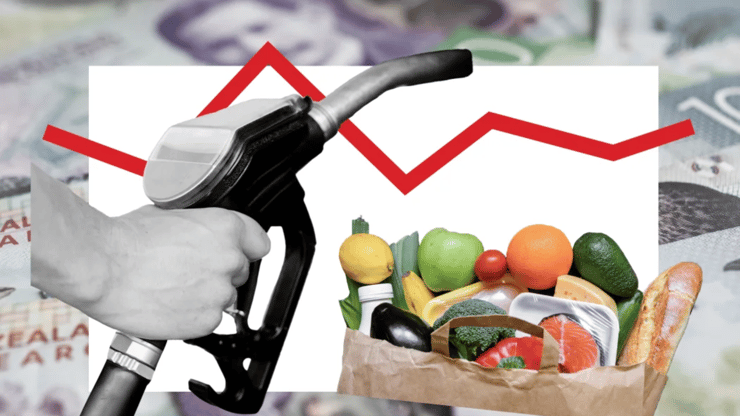Prices Slowly Fall But Economists Warn Of Uncertain Year Ahead

Annual inflation is likely to have ended 2024 close to the Reserve Bank's target, as domestic price pressures continue to ease slowly, but economists are warning about an uncertain year ahead.
The consensus was that the consumer price index (CPI) rose by about 0.5 percent in the three months that ended December, with the annual rate at just above 2 percent.
Economists said seasonal factors such as airfares and accommodation costs would likely be key drivers of inflation in the quarter, with falls in food and fuel prices.
But, the weak New Zealand dollar and higher oil prices may change the inflation story in 2025.
The country's biggest bank, ANZ, said annual inflation would likely come in at 2.2 percent, unchanged from the previous quarter.
It was slightly higher than the Reserve Bank's (RBNZ) forecast of 2.1 percent but within its 1 to 3 percent target band and near its midpoint.
ANZ said non-tradable inflation (domestically driven inflation) was forecast to rise 0.8 percent in the quarter, down from 1.3 percent in the previous quarter.
Weaker petrol prices were likely more than offset by seasonally higher prices for airfares, ANZ senior economist Miles Workman said.
Rent was another factor driving domestic prices, he said.
Westpac had also forecast a 0.5 percent rise in CPI for the December period, which was slightly higher than the bank previously expected.
Westpac senior economist Satish Ranchhod also pointed to strong international airfares in December, but he said "swings of such volatile items are not a key focus for monetary policy".
"More importantly, our forecast for 2.1 percent annual inflation is in line with the RBNZ's forecast, as is our forecast for non-tradable inflation. Overall, we don't expect the December quarter inflation report will deliver a big surprise for the RBNZ," Ranchhod said.
Dollar worry, and why official cash rate fall may be limited
Economists were keeping a close eye on the New Zealand dollar and the inflation risks associated with it, after it fell to its lowest level since 2022.
"Over time, that decline could push up the cost of some imported goods, such as petrol.
"This will be an important area to watch over the coming year and will likely be a consideration for the RBNZ's policy stance," Ranchhod said.
However, he said the impact of the weak dollar on Wednesday's inflation report would likely be modest.
ASB senior economist Mark Smith expected annual inflation to marginally push higher over 2025, ending the year at around 2.5 percent, driven by prices for imported goods and services.
"The lower NZD/USD, recent tick-up in oil prices and higher food commodity prices point to modest 2025 lifts.
"The impact of Trump tariffs could potentially add more to inflation, but we will have to wait and see as the impacts on NZ inflation could be ambiguous," Smith said.
He said another half percentage point cut to the official cash rate (OCR) from the current 4.25 percent was likely, followed by back-to-back 25 basis point cuts in both April and May.
"Whether the RBNZ will need to push the OCR below circa 3.25 percent neutral levels or have the OCR move higher remains to be seen, with monetary policy settings for 2025 and beyond highly conditional on the (still uncertain) economic outlook," Smith said.
Workman took a similar view.
He said assuming a "neutral" OCR was around 3 percent, higher imported inflation would unlikely take a 50 basis point cut next month off the table.
"But an upwards recalibration to the non-tradable and core inflation outlook could certainly see the RBNZ reassess how low the OCR eventually goes this year," he said.
ANZ retained its forecast of the OCR falling to 3.5 percent this year.




